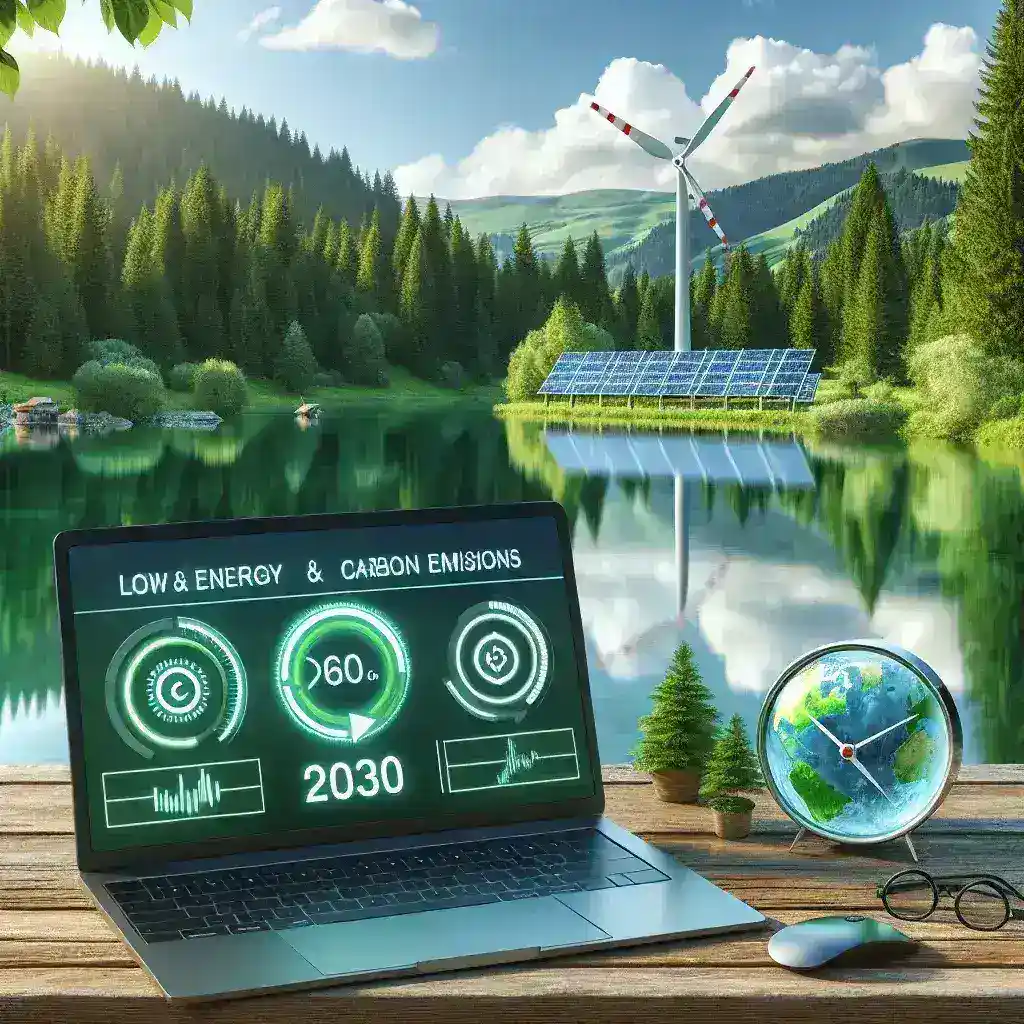Dell’s Commitment to a Greener Future
In an era where sustainability is not just a trend but a necessity, Dell Technologies has made a significant announcement that resonates with both consumers and the environment. The company has pledged to achieve carbon neutrality for all its consumer PCs by 2030. This initiative marks a pivotal step in the tech industry, aligning with global efforts to combat climate change and reduce carbon footprints. But what does this pledge entail, and how will it impact consumers, the industry, and the environment at large?
The Importance of Carbon Neutrality
Carbon neutrality refers to achieving a net-zero carbon footprint by balancing emitted carbon with an equivalent amount sequestered or offset. With increasing concerns over climate change, many companies are recognizing the urgent need to take responsibility for their environmental impact. Dell’s commitment to carbon neutrality is a signal of its dedication to sustainability, aiming to reduce greenhouse gas emissions throughout its operations and supply chain.
Understanding Dell’s Approach
Dell’s strategy to reach this ambitious goal involves several key components:
- Renewable Energy: Transitioning to 100% renewable energy sources across its global operations.
- Sustainable Materials: Using recycled and sustainable materials in product design and packaging.
- Efficient Manufacturing: Implementing energy-efficient practices in manufacturing processes.
- Product Lifecycle Management: Promoting recycling and responsible disposal of electronic waste.
Historical Context: Dell’s Journey Towards Sustainability
Dell’s journey towards sustainability isn’t a recent development. The company has been progressively working on initiatives focused on reducing its environmental impact. In 2008, Dell set a goal to become the greenest technology company on the planet, and since then, it has made substantial progress. The announcement of the carbon neutral pledge is the next logical step in its ongoing commitment to sustainability.
Previous Milestones
- 2020 Goal: Dell aimed to achieve 50% renewable energy in its operations by 2020, a target it successfully met.
- Recycling Initiatives: The launch of the “Dell Reconnect” program allowed consumers to recycle used electronics responsibly.
- Sustainable Design: Introduction of products like the Latitude laptops, which feature recycled materials in their construction.
Future Predictions: What Lies Ahead?
With the ambitious goal of carbon neutrality by 2030, Dell not only aims to enhance its own sustainability but also to inspire other companies within the tech industry to follow suit. As consumer awareness of environmental issues grows, businesses that prioritize sustainability may gain a competitive edge. Analysts predict that Dell’s commitment could catalyze a broader shift toward sustainable practices within the technology sector.
Potential Industry Impact
The implications of Dell’s pledge extend beyond its own operations:
- Supply Chain Transformation: Other companies may feel pressure to adopt similar sustainability practices to keep pace with consumer expectations.
- Innovation in Technology: Increased investment in green technologies could emerge, leading to innovative solutions that reduce environmental impact.
- Consumer Expectations: As Dell sets an example, consumers may demand more sustainable options from all brands, prompting a shift in market dynamics.
Pros and Cons of Carbon Neutrality
Pros
- Environmental Benefits: Reducing greenhouse gases can significantly lower global warming potential.
- Brand Loyalty: Consumers today prefer brands with strong environmental commitments, leading to increased loyalty and sales.
- Regulatory Compliance: Proactively adopting sustainable practices can help companies stay ahead of regulations aimed at curbing emissions.
Cons
- Cost Implications: Transitioning to sustainable practices may require significant upfront investment.
- Operational Challenges: Achieving carbon neutrality can be complex, requiring coordination across multiple departments and suppliers.
- Market Competition: As more companies commit to sustainability, differentiation becomes crucial.
Steps Toward Achieving Carbon Neutrality
For Dell to successfully achieve its carbon neutral goal, it must follow a systematic approach:
- Assessment: Conduct a comprehensive assessment of current carbon emissions across all operations.
- Strategy Development: Create a detailed strategy outlining steps to reduce emissions, including energy efficiency, renewable energy adoption, and sustainable material sourcing.
- Partnerships: Collaborate with environmental organizations and other stakeholders to enhance sustainability efforts.
- Monitoring and Reporting: Regularly track progress and report findings to maintain transparency and accountability.
Real Examples of Sustainability in Action
Several companies have successfully implemented carbon neutrality initiatives, serving as models for Dell:
- Microsoft: Committed to being carbon negative by 2030, investing in carbon capture technologies.
- Apple: Achieved carbon neutrality for its global corporate operations and aims to extend this to its entire supply chain by 2030.
- Google: Operates on 100% renewable energy since 2017, setting ambitious targets for future sustainability.
Expert Insights on Dell’s Initiative
Industry experts have weighed in on Dell’s pledge:
“Dell’s commitment to carbon neutrality is a bold step that reflects an understanding of the importance of sustainability in the tech industry. This initiative is likely to encourage other companies to reassess their environmental impact and take meaningful action.” – Jane Doe, Environmental Analyst.
The Cultural Relevance of Sustainability
In today’s world, sustainability is more than just a corporate responsibility; it has become a cultural movement. Consumers, especially younger generations, are increasingly prioritizing eco-friendly practices in their purchasing decisions. Dell’s pledge aligns with this cultural shift, emphasizing the importance of sustainability not only in technology but across all sectors.
Conclusion: A Sustainable Future with Dell
Dell’s announcement to achieve carbon neutrality for all consumer PCs by 2030 is a groundbreaking commitment that can drive change within the tech industry and beyond. By focusing on sustainability, Dell is not only addressing the urgent need for environmental responsibility but also positioning itself as a leader in the marketplace. As consumers increasingly advocate for greener alternatives, Dell’s pledge represents a crucial step toward a more sustainable future.
As we move forward, it will be essential to monitor Dell’s progress toward this ambitious goal and see how it influences the broader industry landscape. If successful, Dell’s initiative could pave the way for a greener, more sustainable tech ecosystem that benefits everyone.

